High‐Intensity Laser‐Ion Trap Experiment (HILITE)
Collaborators:
Stefan Ringleb1, Nils Stallkamp1,2, Sugam Kumar3, Manuel Vogel2, Markus Kiffer1, Wolfgang Quint2,4, Gerhard G. Paulus1,5 and Thomas Stöhlker1,2,5
1Institute of Optics and Quantum Electronics, Friedrich Schiller University Jena
2GSI Helmholtzzentrum für Schwerionenforschung GmbHExternal link
3Inter-University Accelerator CentreExternal link
4Physikalisches Institut, Ruprecht-Karls-Universität HeidelbergExternal link
5Helmholtz Institute JenaExternal link
Experiments with high-intensity laser pulses are usually performed on solid or gaseous targets. They offer a high particle density and thus achieve a large number of reaction products. However, for a detailed investigation of the ionization process in the multi-photon regime it is advantageous to study simple systems with one active electron. Hydrogen-like ions, such as five-charged carbon, are particularly suitable for this purpose.
Therefore, in collaboration with the GSI Helmholtzzentrum für Schwerionenforschung in Darmstadt we have developed a Penning trap which is optimized to store, confine and detect highly charged ions non-destructively. Inside a Penning trap the ions are stored by the superposition of a strong magnetic field (6 T) and a static quadrupolar electric field. In this way, we can control the properties of a particle cloud with respect to ion density, shape and type of particles. In particular, it is even possible to prepare a single-species ion cloud in the ion trap. The induced mirror charges of the ions in the trap electrodes allow the non-destructive determination of the stored charge states and an estimation of their number - both before and after the laser shot. The well-defined ion target is further ionized with high-intensity laser radiation and from the number of higher charged ions we will precisely determine the cross section of the laser ionization. It is possible to detect all charge states of all nuclides up to xenon non-destructively.
As ion source we use a so-called Electron-Beam Ion Trap (EBIT) in which we can generate ions of high charge states (e.g. Ar16+). This ion source is compact and transportable, which allows us to work independently of accelerator facilities.
-
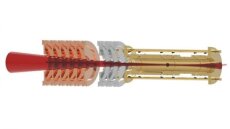 Experimental principle: Stored ions in the center of the trap are ionized further by a focussed intense laser. The brown electrodes are used to decelerate the ions entering the trap.Illustration: Stefan Ringleb
Experimental principle: Stored ions in the center of the trap are ionized further by a focussed intense laser. The brown electrodes are used to decelerate the ions entering the trap.Illustration: Stefan Ringleb -
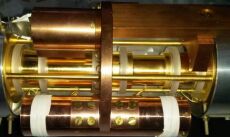 Penning trap with radial and axial resonator for non-destructive particle detectionImage: Stefan Ringleb
Penning trap with radial and axial resonator for non-destructive particle detectionImage: Stefan Ringleb -
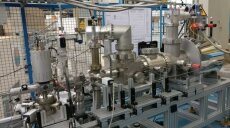 Complete setup including EBIT, Wien filter, laser beam dump, cryogenic magnets with ion trap and laser window (from left to right)Image: Stefan Ringleb
Complete setup including EBIT, Wien filter, laser beam dump, cryogenic magnets with ion trap and laser window (from left to right)Image: Stefan Ringleb -
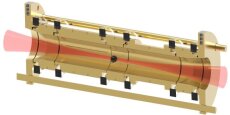 Schematic sketch of the penning trapIllustration: Stefan Ringleb
Schematic sketch of the penning trapIllustration: Stefan Ringleb -
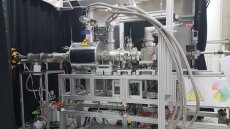 Experimental setup of HILITE at the FLASH LaserImage: Stefan Ringleb
Experimental setup of HILITE at the FLASH LaserImage: Stefan Ringleb
The setup was also designed to be transportable. The dimensions are (300 x 120 x 200) cm with a mass of less than 2000 kg. The whole setup can be disassembled into several small modules.
This setup has already been used to perform first measurements at the free-electron laser FLASHExternal link in Hamburg. There it was shown that the setup can be transported and brought back into operation very reliably. We plan to combine the trap with other different large-scale lasers, such as POLARIS and JETI in Jena. This will enable us to cover a wide range of ionization parameters.
The HILITE ion trap is constantly being improved and developed and we are offering bachelor and master theses on this topic.
Related literature:
[1] HILITE—A tool to investigate interactions of matter and lightExternal link
[2] A Penning trap for advanced studies with particles in extreme laser fieldsExternal link
Background information:
[3] Extreme Ultraviolet Laser Excites Atomic Giant ResonanceExternal link
[4] Dynamics of laser-cooled Ca+ ions in a Penning trap with a rotating wallExternal link